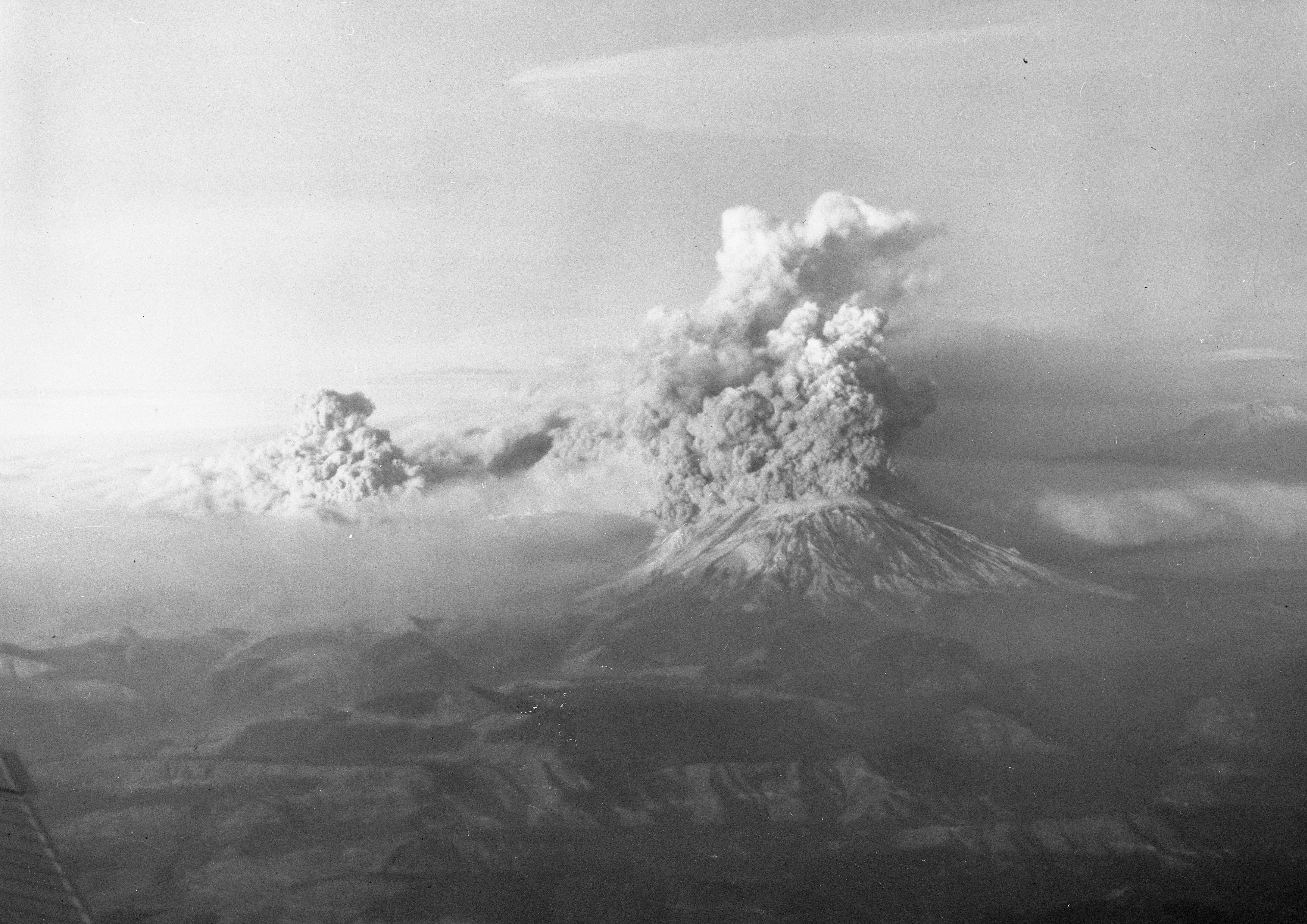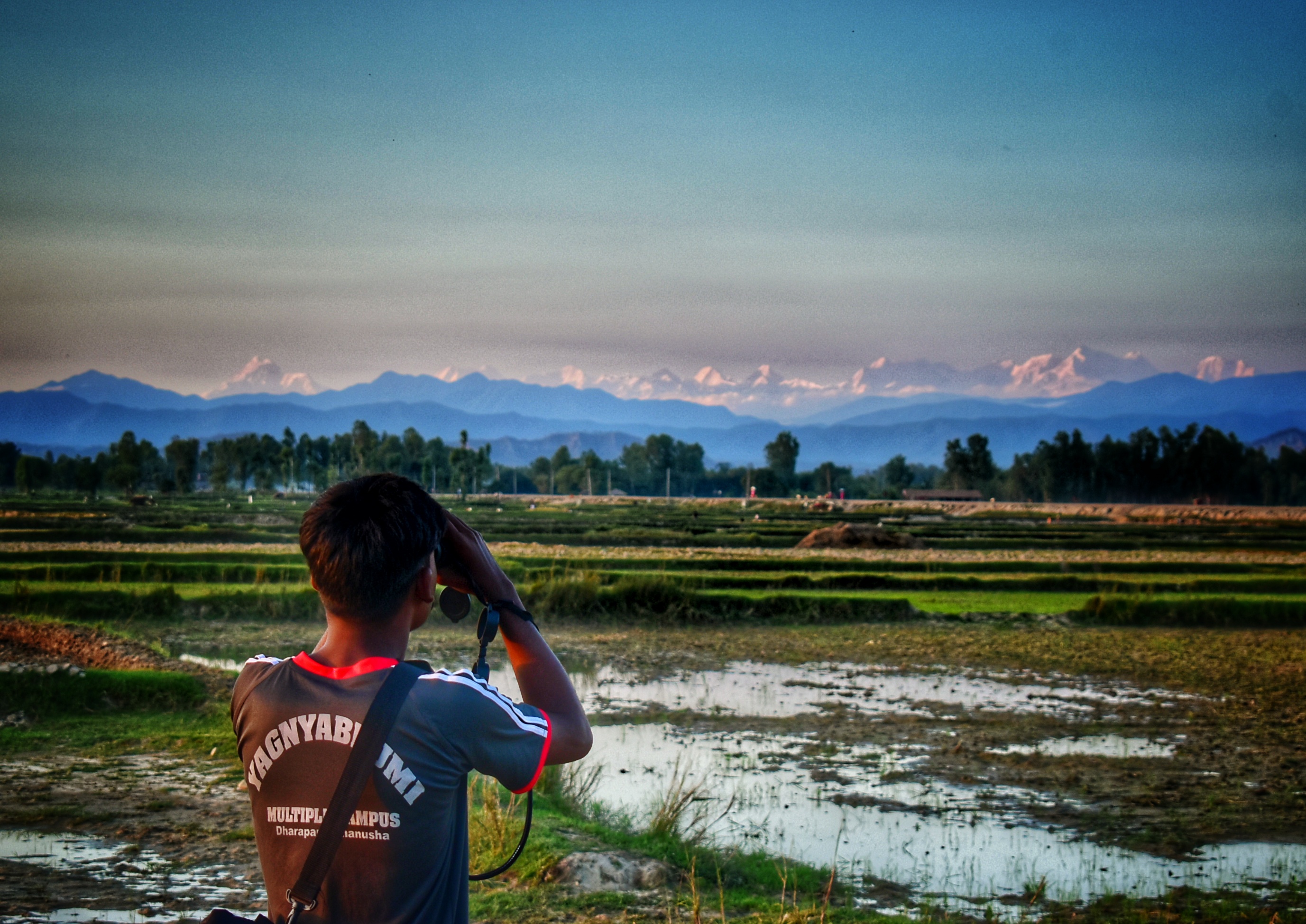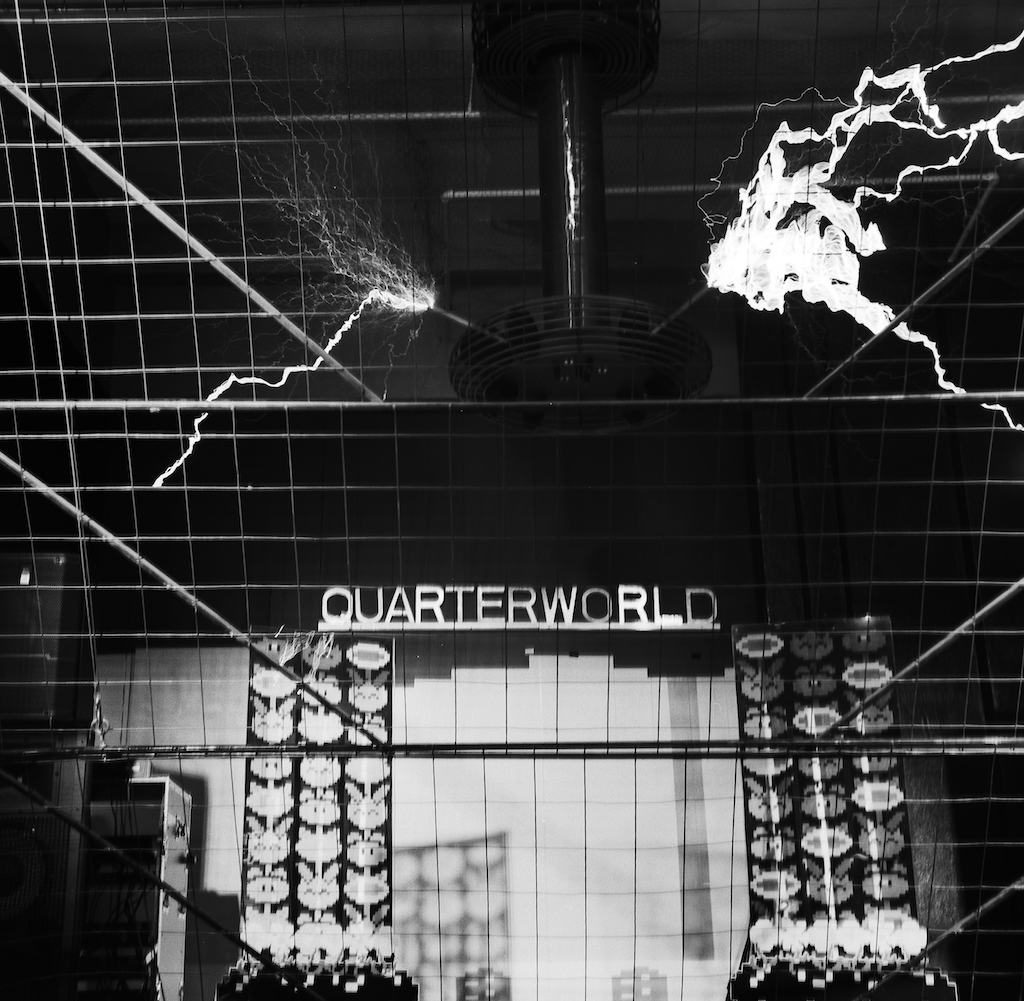A word from the editor: 8:32 a.m. on May 18, 2020 marked 40 years since the Mount St. Helens eruption, and while Mount St. Helens will probably be around for many decades to come, the same is less certain for the people who witnessed the event. How much longer are we able to hear about this geological phenomenon firsthand? Everyone in the Pacific Northwest for May 18, 1980 has a story to tell, and it’s important for later generations to take a moment and listen.
Virtual OMSI
Oregon Museum of Science and Industry (OMSI) hosted a virtual presentation, and following question and answer session, about Mount St. Helens on May 18, featuring experts in fields of geology, seismology and volcanology. Heather Wright, a research geologist for the Volcano Disaster Assistance Program in Vancouver, Washington, was the event’s primary speaker.
Besides the May 18, 1980 eruption, Wright spoke of the volcanic activity leading up to the event and of subsequent eruptions that occurred for the remainder of that year. According to Wright, there weren’t any signs of activity until earthquakes started happening in March 1980, with the largest occurring on March 20, 1980 at a magnitude of 4.2.
Wright played a video of scientist David Johnston—who was among the 57 victims of the May 18, 1980 eruption—speaking with KING 5 Seattle news about a steam explosion at Mount St. Helens that occurred on March 27, 1980. “Right now there is a very great hazard due to the fact that the glacier is breaking up on this side of the volcano, on the north side of the volcano, and that could produce a very large avalanche,” Johnston said while standing in the snow near the volcano. “This is not a good spot to be standing.”
By April 27, 1980, the side of the volcano took on a different shape as a dramatic bulge formed on the northside. “That bulge is formed by the side of the volcano moving in order to accommodate magma coming shallowly into the mountain, and pushing out the whole side of the volcano,” Wright said.
According to Wright, the eruption first began with a debris avalanche moving away from the volcano at 70–155 mph. “Fast enough that chunks of the volcano…actually made it up and over some ridges north of the volcano pushing up to 14 miles away to the northwest,” Wright said.
Immediately following the debris avalanche was the faster lateral blast, travelling at 220 mph up to 17 miles to the northwest. “So fast that even though the debris avalanche started first, by the time these two phenomena reached Coldwater Lake, the lateral blast actually overtook…the debris avalanche,” Wright said of the lateral blast.
Hours after the eruption, pyroclastic flows—dense magmatic gas—followed the topography of the volcano at 50–80 mph reaching temperatures greater than 1300 degrees Fahrenheit. Subsequent eruptions occurred on May 25, June 12, July 22, August 7 and in October of the same year.
Kathy Daniel, a volunteer for the Mount St. Helens Institute, attended OMSI’s event, and shared her story in an interview.
“My husband and I were living in Southeast Portland and we were driving over to my in-laws in Vancouver—we just found out we were expecting our first child—to give them the news,” Daniel said. “When we were on Marine Drive, we looked over and noticed we could see the eruption.”
Daniel’s in-laws lived on a north facing cul-de-sac where the family watched the volcano throughout the day. “We just sat there and watched the ash billowing up,” Daniel said.
According to Daniel, the May 18, 1980 eruption didn’t send ash Portland’s way, but eventually made its way south, following smaller eruptions. “I worked for Benjamin Franklin Savings and Loan at the time,” Daniel said. “What happened was in future eruptions, when the ash came our way, it basically shutdown our ATMs, because it was getting into the systems.”
“The lightning is just the one visual I’ll never get out of my head, because it was just like, wow,” Daniel said regarding what she found most memorable about the eruption. “I’ve seen thunderstorms in the Southwest that were pretty terrific, but seeing that just come out of this mountain, creating its own weather, it was just amazing.”
Vanguard and a volcano
Portland State Vanguard began its coverage of Mount St. Helens on Friday, March 28, 1980 with an article by student journalist Pamela Reamer, just after a steam explosion and earthquakes at the mountain showed signs of volcanic activity. “Steam and ash were reported to be coming from the NE face of the mountain shortly after 1 p.m. Thursday,” the article stated. “[PSU’s Earth Sciences] department will maintain crews near Randle, Carson and Kelso, all in Washington, throughout the duration of activity.”
According to the March 28, 1980 article, a seismograph was kept in Cramer Hall recording any seismic activity, available for “curious on-lookers” to see.”They had it in the basement…behind a glass case in the middle of the hallway down there with a big roll of paper,” said Joanne Rekow, a PSU student at the time, in an interview 40 years later. “They had it going for months.”
Another of Reamer’s articles was published in the April 4, 1980 issue with the headline, “Mt. St. Helens moving rapidly toward…what?”
“The consensus among the PSU Earth Sciences department is that Mt. St. Helens is progressing at a much faster rate than most volcanoes of its type,” the April 4 article states. “Yet they agree one cannot predict an eruption is [imminent] because each volcano has its own characteristics.”
As excitement over Mount St. Helens grew, so did the public’s anticipation for an eruption. On April 25, 1980, Vanguard published a satirical article about the exclusive eruption rights being sold to “disaster movie producer Rank Panderer” for “an undisclosed fortune.” According to the article, it was too costly for Panderer to keep his film on stand by as they waited for the eruption, so Panderer made arrangements with the U.S. government to test its “untried neutron bomb” on the volcano.
“If it doesn’t make the mountain explode, it will make a damn fine picture with the fire and smoke and all,” Panderer said.
When Mount St. Helens erupted, the PSU Geology department, along with 70 geology students, were on a field trip in John Day, Oregon, according to a Vanguard article on May 20, 1980. At 8:45 a.m., the group heard a boom, and Geology professor Richard Thoms is reported to have jokingly said, “there goes Mt. St. Helens!”
News of the eruption didn’t reach the group for another hour, but while the field trip continued, many of the faculty members left early. Students were reported to have become angry having to continue the field trip, some talked of mutiny while others tried to bribe the bus driver to take them back.
“Here Mt. St. Helens is erupting, probably the biggest geological phenomenon in our lifetime, and here we are in John Day fossilizing,” said Kirk Cook, a PSU student on the trip.
Rekow was living with her parents in Northwest Portland during the eruption, and could see the cloud plume from the living room window.
“I drove with my mom up into the hills, there were a lot of people on a farm there and we sat in a field and watched the eruption for a long time,” Rekow said. For her, the experience of watching Mount St. Helens erupt was like watching an eclipse, but much longer.
Rekow recalled stepping out of a pizza place with a girlfriend to “snowing ash” after smaller eruptions brought ash to Portland. According to Rekow, the ash accumulated on the roofs of houses in her neighborhood, and her father had to sweep the ash off with a push broom on “ash cleaning day.” Ash even seeped into Rekow’s parent’s car, which caught Rekow by surprise while driving on a warm day.
“I flipped open the air…and this ash flew out of the air conditioning, because it hadn’t been on, and got in my contacts [while] I was going down the highway,” Rekow said. “I thought, ‘oh my god I can’t see.'”
In the May 30, 1980 Vanguard issue, Alice MacMullen wrote about trying to understand the hype surrounding the natural disaster in a column titled “Alice in Wonderland.”
“A real-life certified calamity provides a focus for irrational fears, and the growing suspicion that much of your life is simply out of your hands these days.,” the article states. “There is nothing you or anyone can do, really, things just build up till something has to give. And no one is to blame. It is no coincidence that this morning the Oregonian headlined rising unemployment statistics next to the Mt. St. Helens rising death toll.”
Preserving history
Alysa Adams, a parks interpretive ranger for the Mount St. Helens Visitor Center at Castle Rock, Washington, has collected 35 recorded interviews and 300 written stories from community members about the Mount St. Helens eruption over the past year and a half. The oral history project was in preparation for the 40 year “erupti-versary,” according to Adams.
“The goal originally was to showcase these stories, especially the audio or video ones, in a seasonal exhibit here at our visitors center, where you would walk in and kind of have this full immersion experience,” Adams said. With the current pandemic, much of the project was made available to the public virtually on the Washington State History Museum’s Facebook page and the oral history project’s website.
One quote from Adams’ project came from Janet Sjoholm, who lived in Yakima in 1980 and was graduating high school that year: “It was completely dark, raining sand, it smelt like lit matches and it happened for the rest of the day.”
According to Adams, while the project has been a team effort, she had the initial spark for the idea. “What I realized very early on is my day-to-day interactions with visitors involved listening to their eruption stories, and I was a soundboard for them,” Adams said. “Almost every other person that walked through the door had a smile on their face as they wanted to tell the ranger behind the desk what they remember from May 18, 1980.”
“Eventually [those stories] became a part of who I am as a person and my career, and I realized I have this golden opportunity to take those stories and preserve them,” Adams said.
While previous erupti-versary events collected community stories about the 1980 eruption, Adams’ project differs in that its focus is to be welcoming and inclusive.
“Ours is the first that didn’t target survivors, ours was very intentional to target anybody who wanted to share, because I think a lot of people didn’t realize how special their stories were,” Adams said.
The result is a diverse collection of stories of varying ages, professions, experiences and locations. “We have reports from a 6 year old…who remembers having fun playing in the ash,” Adams said. “And then you get the perspective of a 30-year-old dad who is nonstop stressed cleaning and trying to keep his kid safe.”
When asked if any stories stuck out to her in particular, Adams mentioned an interview with Carolyn Driedger, a glaciologist for the United States Geological Survey. “She tells this story, this really powerful story about being out on the Coldwater research station, out on the ridgeline, looking at the mountain, watching it steam, watching that bulge do its thing, and she talked to David Johnston,” Adams said.
Driedger and a colleague visited Johnston on May 17, 1980 near Coldwater Lake, and considered staying the night as the two wanted to visit a glacier the next day. “[Johnston] said, ‘this isn’t the safest place to be, let’s have as few people up here as possible,’” Driedger said in the interview. “We don’t really know what’s going to happen to that bulge there, it could be that it falls in little pieces, or it could be that there is one massive slide, or it could be that there’s a good amount of energy with the expanding magma, inside the magma chamber, and it could give it a good push. It could come right up over the side of the ridge here, and take us out.’”
“We titled [the project] ‘Voices of the Mount St. Helens Community’ and that was a really great way to showcase it,” Adams said. “The people here remember, and they’re always going to remember. It’s this living legacy of this gigantic volcano and the stories being told by the people who witnessed it and remember that day.”





